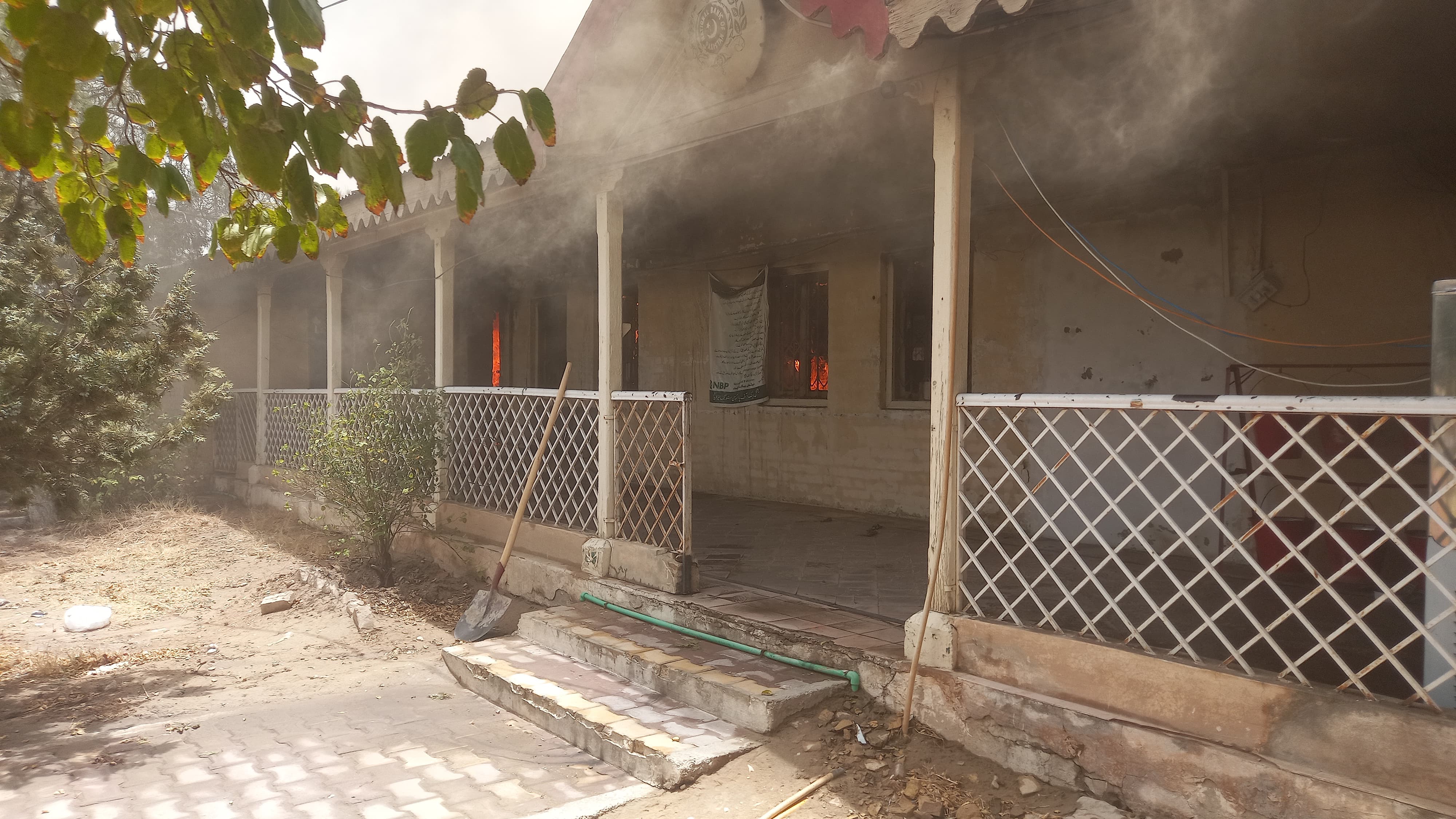Dr ali ahmad
Voter (50+ posts)
When we sleep well, we take it for granted. Most people don't realise the benefits which sleep provides until they can't sleep well any more.
Unfortunately, about one-third of us will suffer from at least one of around 75 clinical sleep disorders at some time during our lives. Many will have sleep problems without receiving a formal diagnosis. Such sleep disorders may be temporary, perhaps as a consequence of a traumatic experience such as bereavement or divorce, or can become a chronic,* lifelong problem. Some are brought on by people's own behaviour, for example, by working at night or gaining too much weight, or medication use. Regardless of the cause, sleep disorders significantly* affect quality of life and, long term, are detrimental to health and wellbeing.
There are eight types of sleep disorders according to the International Classification of Sleep Disorders (ICSD-2): 1. insomnia; II.sleep-related breathing disorders; lll. hypersonic of central origin; lV. Circadian rhythm sleep disorders; V. Parasomnias; VI. Sleep-related movement disorders; VII. Isolated symptoms and normal variants; VIII.Other sleep disorders.
Insomnia, the most common sleep complaint, is not a specific disease but a broad symptom describing inability to sleep. It encompasses different sleep problems; some patients find it difficult to fall asleep (sleep-onset insomnia ), some can fall asleep but cannot stay asleep ( sleep-maintenance insomnia),and some wake up too early. Transient insomnia can start and end quite quickly in relation to a life event, whereas some individuals will have a lifelong battle with insomnia, never feeling able to get enough sleep.
Up to 40% of adults may suffer from insomnia at some time in their lives, with as many as 15% suffering chronically.* Women report more insomnia than men, although women actually tend to sleep better when measured in studies. Insomnia complaints increase with age, with as many as half of over-65s reporting problems. Sleep is also often disturbed in older people by having to get up to go to the bathroom at least once a night, a situation called 'nocturia', which affects more than one-third of older people, and, when chronic, is associated with poor health outcomes and increased mortality.
There are multiple causes of Insomnia, but patients generally fall into three categories. Some individuals appear to have an inherent predisposition for insomnia and may exhibit hyperarousal or a low homeostatic drive for sleep, making it difficult to fall asleep or maintain sleep. There may be precipitating factors that increase the incidence of Insomnia,* including life events, diseases, nocturia, medications, and drugs or alcohol. Finally, individuals may perpetuate behaviours that led to insomnia, such as use of televisions and computers in the bedroom; exercising, eating or seeing bright light late in the evening; caffeine overuse; napping in the day; or worrying about sleep, which may in turn make sleep more difficult.* The latter problem can become a conditioned response -'learned' insomnia-whereby patients get into a vicious cycle in which they have acute insomnia due to a life event or start worrying about whether they can sleep,* which leads to difficulties with falling asleep, which leads to further worry and behaviours which delay sleep or make it more difficult, which leads to more worries about sleep, and so on. Breaking this cycle is an important component of Insomnia therapy and includes removing the perpetuating factors and improving sleep hygiene.
Types of Insomnia
There are two broad categories:
1. Chronic insomnia - lasting for several weeks, months or even years
2. Transient insomnia - lasting for a few nights or weeks only, usually connected to a stressful event e.g. an exam, a bereavement.
Within these broad categories insomnia usually takes one or more of the following forms:
Difficulty falling asleep is more common among young people, whilst
sleeping restlessly, waking often, lying awake in the middle of the night is more common in people over 40. In younger people it may be associated with depression.
Waking early and being unable to get back to sleep is more common in older people and anyone anxious about something in particular.
Treatment
Untreated insomnia is associated with health problems, although the mechanisms are not known; some diseases may lead to insomnia symptoms, or insomnia may develop as the primary disorder and then increase the risk of subsequently developing other diseases.* Insomnia or insufficient sleep is associated with increased risk of heart disease, stroke, and depression.
Treatment options vary depending on the underlying cause of the insomnia. Addressing an initial cause of insomnia , such as better pain management or recovery from bereavement,* can relieve the symptoms. In primary insomnia, however, therapies that address the insomnia itself are required , and the most common non- pharmaceutical approaches include stimulus control, sleep restriction, and relaxation therapy, and some or all of these may be combined with cognitive behavioural therapy (CBT). These approaches aim to restructure sleeping habits and dismantle conditioned behaviours contributing to the insomnia. Under supervision over several weeks, patients address any anxiety contributing to the insomnia and develop better sleep habits by keeping a more consistent sleep-wake schedule, performing relaxation techniques before bed, removing stimulants such as television, computers, telephones, personal organizers, and light from the bedroom, and rescheduling caffeine use and exercise earlier in the day. When they cannot sleep, patients are discouraged from lying awake for hours in bed but are advised to get up and do some low-level activity in dim light elsewhere before repeating the procedure for going to bed. Sleep-restriction techniques are also used, whereby patients are scheduled to be in bed initially for a restricted amount of time to maintain a high sleep efficiency and reduce the amount of time lying awake, which is then gradually expanded until longer durations of high-efficiency sleep are achieved. These techniques are designed to break bad habits and replace them with good sleep hygiene. CBT has a high degree of long-term success if patients are compliant.
Sleeping pills are commonly used in the treatment of Insomnia, with more than 10 million prescriptions for insomnia written annually in England alone. A range of medications have sleep-inducing effects. The most common among these are short-acting benzodiazepines ( such as Temazepam, Triazolam, Estazolam) and the so-called 'Z-drugs', which act in a benzodiazepine-like manner but are chemically different* ( Zaleplon, Zolpidem, Zopiclone, Eszopiclone).
Insomnia is associated with many psychiatric conditions and with other problems such as pain, disorders such as rheumatoid arthritis and Parkinson's disease, heartburn, or alcohol and drug abuse.
General Advice
1.Try to go to bed and get up at the same time each day;
2. Restrict the use of the bedroom to sleep and sex;
3. Get regular exercise each day, preferably in the morning or afternoon;
4. Get regular exposure to outdoor light;
5. Keep the temperature in the bedroom optimally normal;
6. Keep the bedroom quiet when sleeping and use ear plugs;
7. Keep the bedroom completely dark using black-out curtains or use an eye-mask;
8. Keep your feet and hands warm and use bedsocks;
9. Have the lights as dim as possible an hour or two before bed;
10. Do something relaxing before you go to bed such as relaxation exercises, meditation,* have a warm bath or warm non- caffeinated drink.
11. Don't have a television in the bedroom or watch television in bed;
12. Don't use the computer in the bedroom or sleep with electronic devices by the bed;
13. Don't do vigorous exercise just before bed;
14. Don't have caffeine in the late afternoon or evening;
15. Don't use alcohol or other aids to help you sleep;
16. Don't go to bed too hungry or too full;
17. Don't take over-the-counter medications to aid sleep ( anti-histamines).
.........................
Dr Ali Ahmad
London
Email : [email protected]
11 November 2015
Unfortunately, about one-third of us will suffer from at least one of around 75 clinical sleep disorders at some time during our lives. Many will have sleep problems without receiving a formal diagnosis. Such sleep disorders may be temporary, perhaps as a consequence of a traumatic experience such as bereavement or divorce, or can become a chronic,* lifelong problem. Some are brought on by people's own behaviour, for example, by working at night or gaining too much weight, or medication use. Regardless of the cause, sleep disorders significantly* affect quality of life and, long term, are detrimental to health and wellbeing.
There are eight types of sleep disorders according to the International Classification of Sleep Disorders (ICSD-2): 1. insomnia; II.sleep-related breathing disorders; lll. hypersonic of central origin; lV. Circadian rhythm sleep disorders; V. Parasomnias; VI. Sleep-related movement disorders; VII. Isolated symptoms and normal variants; VIII.Other sleep disorders.
Insomnia, the most common sleep complaint, is not a specific disease but a broad symptom describing inability to sleep. It encompasses different sleep problems; some patients find it difficult to fall asleep (sleep-onset insomnia ), some can fall asleep but cannot stay asleep ( sleep-maintenance insomnia),and some wake up too early. Transient insomnia can start and end quite quickly in relation to a life event, whereas some individuals will have a lifelong battle with insomnia, never feeling able to get enough sleep.
Up to 40% of adults may suffer from insomnia at some time in their lives, with as many as 15% suffering chronically.* Women report more insomnia than men, although women actually tend to sleep better when measured in studies. Insomnia complaints increase with age, with as many as half of over-65s reporting problems. Sleep is also often disturbed in older people by having to get up to go to the bathroom at least once a night, a situation called 'nocturia', which affects more than one-third of older people, and, when chronic, is associated with poor health outcomes and increased mortality.
There are multiple causes of Insomnia, but patients generally fall into three categories. Some individuals appear to have an inherent predisposition for insomnia and may exhibit hyperarousal or a low homeostatic drive for sleep, making it difficult to fall asleep or maintain sleep. There may be precipitating factors that increase the incidence of Insomnia,* including life events, diseases, nocturia, medications, and drugs or alcohol. Finally, individuals may perpetuate behaviours that led to insomnia, such as use of televisions and computers in the bedroom; exercising, eating or seeing bright light late in the evening; caffeine overuse; napping in the day; or worrying about sleep, which may in turn make sleep more difficult.* The latter problem can become a conditioned response -'learned' insomnia-whereby patients get into a vicious cycle in which they have acute insomnia due to a life event or start worrying about whether they can sleep,* which leads to difficulties with falling asleep, which leads to further worry and behaviours which delay sleep or make it more difficult, which leads to more worries about sleep, and so on. Breaking this cycle is an important component of Insomnia therapy and includes removing the perpetuating factors and improving sleep hygiene.
Types of Insomnia
There are two broad categories:
1. Chronic insomnia - lasting for several weeks, months or even years
2. Transient insomnia - lasting for a few nights or weeks only, usually connected to a stressful event e.g. an exam, a bereavement.
Within these broad categories insomnia usually takes one or more of the following forms:
Difficulty falling asleep is more common among young people, whilst
sleeping restlessly, waking often, lying awake in the middle of the night is more common in people over 40. In younger people it may be associated with depression.
Waking early and being unable to get back to sleep is more common in older people and anyone anxious about something in particular.
Treatment
Untreated insomnia is associated with health problems, although the mechanisms are not known; some diseases may lead to insomnia symptoms, or insomnia may develop as the primary disorder and then increase the risk of subsequently developing other diseases.* Insomnia or insufficient sleep is associated with increased risk of heart disease, stroke, and depression.
Treatment options vary depending on the underlying cause of the insomnia. Addressing an initial cause of insomnia , such as better pain management or recovery from bereavement,* can relieve the symptoms. In primary insomnia, however, therapies that address the insomnia itself are required , and the most common non- pharmaceutical approaches include stimulus control, sleep restriction, and relaxation therapy, and some or all of these may be combined with cognitive behavioural therapy (CBT). These approaches aim to restructure sleeping habits and dismantle conditioned behaviours contributing to the insomnia. Under supervision over several weeks, patients address any anxiety contributing to the insomnia and develop better sleep habits by keeping a more consistent sleep-wake schedule, performing relaxation techniques before bed, removing stimulants such as television, computers, telephones, personal organizers, and light from the bedroom, and rescheduling caffeine use and exercise earlier in the day. When they cannot sleep, patients are discouraged from lying awake for hours in bed but are advised to get up and do some low-level activity in dim light elsewhere before repeating the procedure for going to bed. Sleep-restriction techniques are also used, whereby patients are scheduled to be in bed initially for a restricted amount of time to maintain a high sleep efficiency and reduce the amount of time lying awake, which is then gradually expanded until longer durations of high-efficiency sleep are achieved. These techniques are designed to break bad habits and replace them with good sleep hygiene. CBT has a high degree of long-term success if patients are compliant.
Sleeping pills are commonly used in the treatment of Insomnia, with more than 10 million prescriptions for insomnia written annually in England alone. A range of medications have sleep-inducing effects. The most common among these are short-acting benzodiazepines ( such as Temazepam, Triazolam, Estazolam) and the so-called 'Z-drugs', which act in a benzodiazepine-like manner but are chemically different* ( Zaleplon, Zolpidem, Zopiclone, Eszopiclone).
Insomnia is associated with many psychiatric conditions and with other problems such as pain, disorders such as rheumatoid arthritis and Parkinson's disease, heartburn, or alcohol and drug abuse.
General Advice
1.Try to go to bed and get up at the same time each day;
2. Restrict the use of the bedroom to sleep and sex;
3. Get regular exercise each day, preferably in the morning or afternoon;
4. Get regular exposure to outdoor light;
5. Keep the temperature in the bedroom optimally normal;
6. Keep the bedroom quiet when sleeping and use ear plugs;
7. Keep the bedroom completely dark using black-out curtains or use an eye-mask;
8. Keep your feet and hands warm and use bedsocks;
9. Have the lights as dim as possible an hour or two before bed;
10. Do something relaxing before you go to bed such as relaxation exercises, meditation,* have a warm bath or warm non- caffeinated drink.
11. Don't have a television in the bedroom or watch television in bed;
12. Don't use the computer in the bedroom or sleep with electronic devices by the bed;
13. Don't do vigorous exercise just before bed;
14. Don't have caffeine in the late afternoon or evening;
15. Don't use alcohol or other aids to help you sleep;
16. Don't go to bed too hungry or too full;
17. Don't take over-the-counter medications to aid sleep ( anti-histamines).
.........................
Dr Ali Ahmad
London
Email : [email protected]
11 November 2015
Last edited:































